Panzer Division Halftrack Inventories, December 1943
I found an interesting document regarding halftrack allocations to panzer divisions. The document related specifically to a second armored Panzergrenadier Battalion for Gross-Deutschland Panzergrenadier-Division; however, it has great information about authorized halftrack counts and on-hand inventory counts for all panzer divisions. The document had a missing third attachment so, unfortunately, some information was lost.
Halftrack distribution for a Panzer Division
These counts deal specifically with the Sd.Kfz.250 and the Sd.Kfz.251 and their many variants. The first attachment shows the authorized number of light and medium halftracks for a 1943 panzer division. It also shows the halftrack counts for each sub unit of the panzer division. This makes it easy to see how the halftracks are distributed across the division. Each panzer division was authorized 89 Sd.Kfz.250’s and 233 Sd.Kfz.251’s for a total count of 322. Across 32 panzer divisions this would require a total of 10,304 halftracks to have all divisions fully allocated.
Remember that a standard panzer division was only authorized one armored panzergrenadier battalion in the panzer regiments. One regiment had one motorized and one armored panzergrenadier battalion and the other had two motorized panzergrenadier battalions. The majority of the other halftracks would be found in the reconnaissance, engineer and signals battalions. You will also notice that the majority of the light halftrack are assigned to the Aufklärungs Abteilung. With about a third of them in the Panzerspäh Kompanie C which had Sd.Kfz.250/9’s and Sd.Kfz.250/3’s.
The document indicates that halftrack production was 800 units per month and that 200 units were for other uses besides panzer divisions. This leaves 600 units per month for the panzer divisions and would require 15-18 months to fully equip all panzer divisions. The documents also indicates that it would take 500 units per month to replace losses. With these numbers it is easy to see why panzer divisions could not maintain their halftrack inventories to anywhere near full strength.
Panzer Division Halftrack Inventory Counts
The second attachment shows all panzer divisions and the actual number of halftracks they had on hand, effective 12.31.1943. What you will notice in these numbers is that there was a significant shortage of the medium halftracks. In aggregate the light halftracks were at 67% of the authorized total but the medium halftracks were at 30% of their authorized total.
Based on this document Panzergrenadier-Division Gross-Deutschland was not to be authorized a second armored Panzergrenadier Battalion.
The original document can be downloaded below.
Sources:
Bundesarchiv



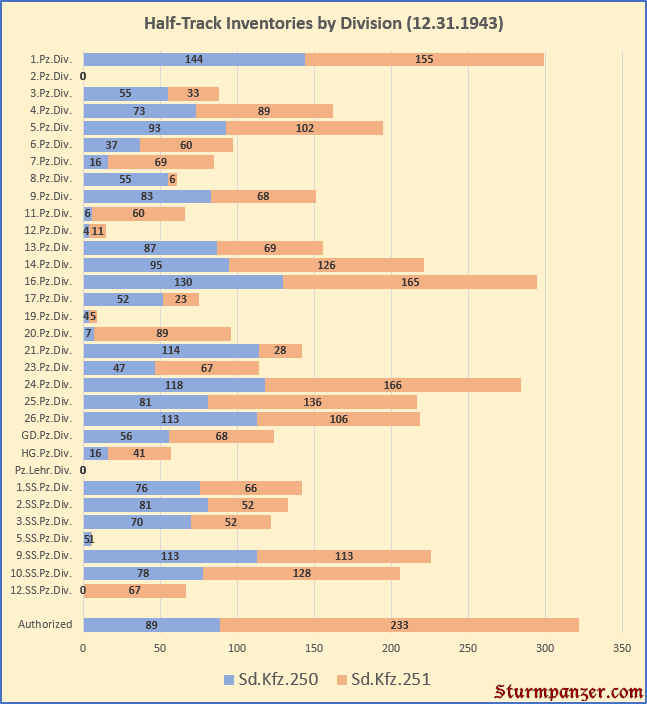



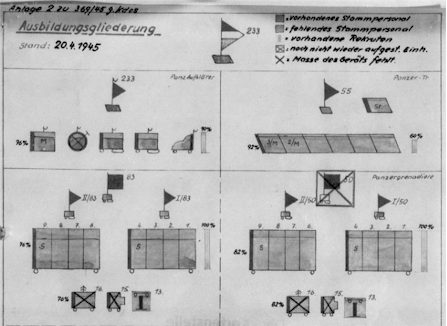
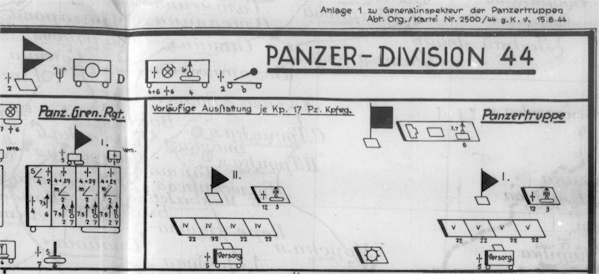
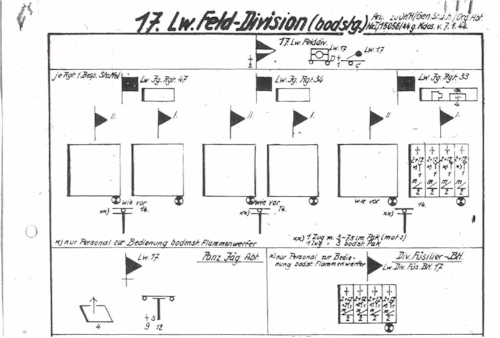



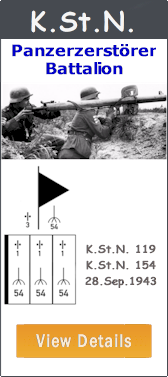
Thank you so much for posting all this interesting docs and articles.
Best regards.
Guido / Germany
Hey Guido. Thanks a lot for the feedback!
Cheers,
Richard
Great job Richard – keep up the good work!
Hey Doug! Thanks, hope you are doing well.
Richard
This is a great find!!! Thank you so much!
Hey Jason. Thanks for the feedback!
Cheers,
Richard
Most German SPW docs unfortunately don’t indicate the specific model of SPW issued. It’s possible to find a couple of detailed AFV inventories for certain Pz Divs at certain times, however. These suggest that during 39-42, at least half of SPWs issued to Panzer formations were C3 and artillery observation models, with the remainder dived between 251/1 and 251/7 engineering types. Early war Panzer Grenadier units were not equipped with many 251/1, often just a company or two per division. At the time of Zitadelle, SPW models in Pz Divs were about; 50% 251/1, 30% the various C3 vehicles, and 20% Pioneer 251/7 models. The same rough % applied to 250 as well. At Kursk PzDivs averaged about 2-3 companies with 251/1, but had just as many or even more C3 SPWs..
Only by the summer of 44 were enough SPWs available to equip one Pz Gren Bn per Pz Divison.